Art Guides
Contemporary Art From Africa Is Seizing Global Attention. Here’s Your Guide to Six Emergent Art Markets Making It Happen
Here is your guide to six dynamic emerging art capitals: Accra, Addis Ababa, Cape Town, Dakar, Lagos, and Marrakech.
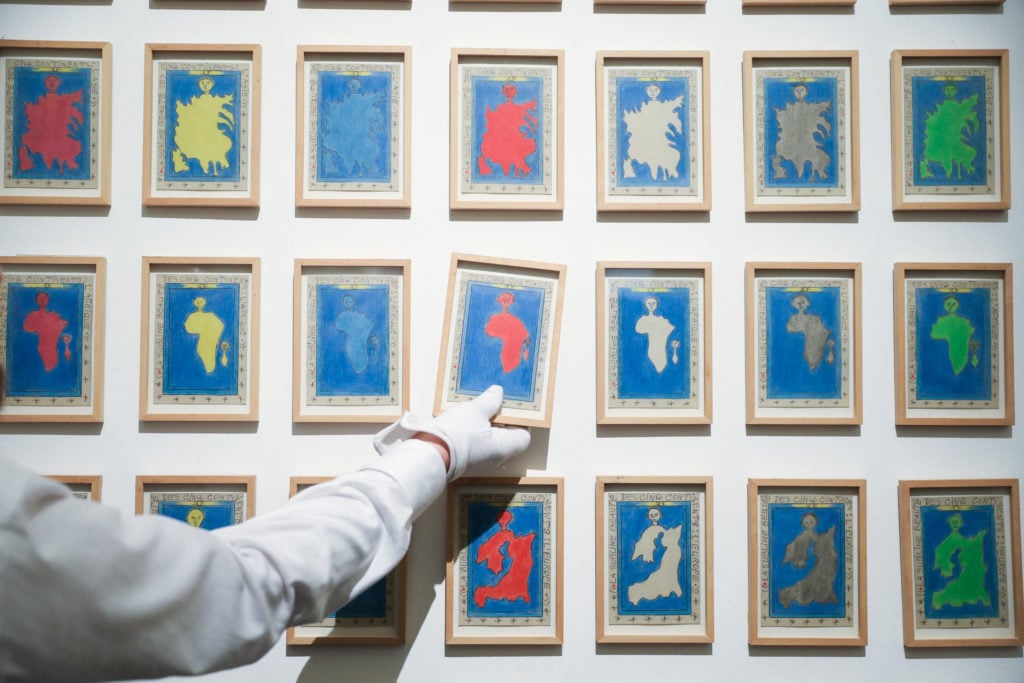
Here is your guide to six dynamic emerging art capitals: Accra, Addis Ababa, Cape Town, Dakar, Lagos, and Marrakech.

Rebecca Anne Proctor

A version of this story originally appeared in the fall 2019 artnet Intelligence Report.
Ask a question about the African art market, and many experts will be quick to tell you that there is no such thing. How could one market possibly encompass 54 countries, 1.2 billion people, and countless aesthetic traditions?
It can’t. But that won’t stop the global art market from trying. The commercial sector has a way of co-opting talent into the international art slipstream (sometimes flattening history and context in the process). It has done so with artists—and entire movements—from Asia and Latin America in the past. Africa may be next in line.
The seeds are there: strong art schools, a growing number of high-net-worth individuals, and rapid urbanization. Researchers project that the continent will be home to at least nine cities of more than 10 million people by 2050. Meanwhile, museums in Europe and North America have hosted an unprecedented number of shows of African art in recent years, while art fairs dedicated to the field have sprung up worldwide, including 1-54 in New York, Marrakech, and London, where its seventh edition opens this week, and the newer Art X Lagos, which kicks off its fourth edition in Nigeria in November.
Activity in cities such as Marrakech and Lagos is “opening the eyes of collectors,” says Kavita Chellaram, founder of the Lagos-based auction house Arthouse Contemporary. “African collectors from different regions are now interested in buying African art from different regions. There will be an African art market. It’s just the beginning.”
Today, Africa’s art market has plenty of room to grow. Fewer than 1,000 works were sold at auction on the continent in the first six months of 2019, according to the artnet Price Database. Unlike Asia, where Hong Kong has emerged as a hub for the trade, Africa lacks a preeminent art-market capital.
And while the continent’s local collector base is growing steadily—Sotheby’s fourth dedicated auction of Modern and contemporary African art in April was dominated by African buyers and generated a total of $3 million, above its presale high estimate of $2.7 million—it is still nascent compared with the US, China, and Europe.
What is missing? “You need an infrastructure,” says Hannah O’Leary, head of Modern and contemporary African art at Sotheby’s. “On the whole, there is a real lack of public support. We are seeing lots of raw talent, but we need more of a market structure in order to support their careers.”
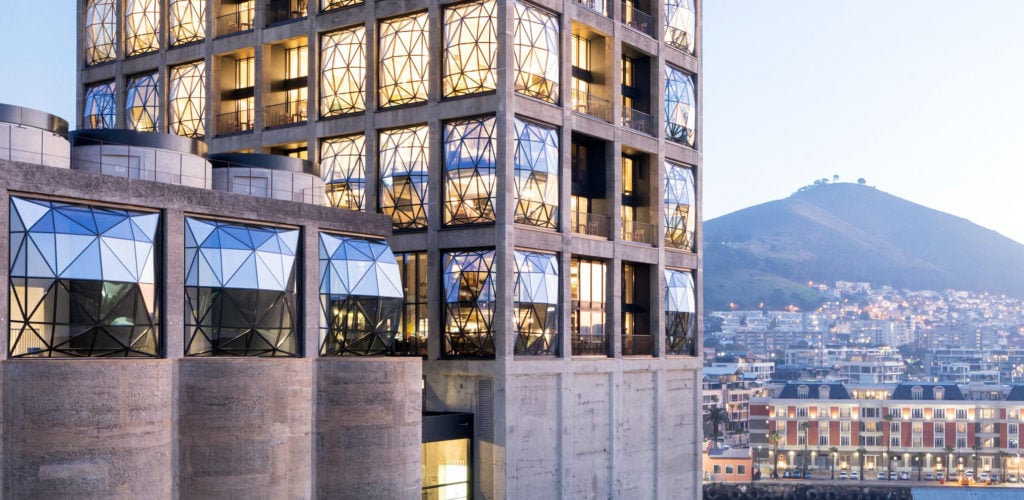
The Facade of Zeitz MOCAA. © Heatherwick Studio, photo: Iwan Baan.
Some ambitious institutions are already rising. Over the past two years, museums like Zeitz MOCAA in Cape Town, the Museum of African Contemporary Art Al Maaden in Marrakech, and the Museum of Black Civilizations in Dakar have launched with a mission to write their own contemporary art histories. Meanwhile, artists who have already found commercial success, such as Hassan Hajjaj and Ibrahim Mahama, have set up institutions of their own to nurture young talent at home.
A single hub for such a massive and heterogenous continent may never materialize. Instead, Rakeb Sile, cofounder of the gallery Addis Fine Art, predicts that “there will be and should be different hubs in several regions of Africa.”
We have assembled a guide to six of these dynamic emerging art capitals: Accra, Addis Ababa, Cape Town, Dakar, Lagos, and Marrakech. Each city has its own heritage, culture, and distinctive history with colonialism—resulting in unique artistic production.
Painting remains most popular in East Africa, which is home to the two oldest art schools on the continent, while West Africa has fostered more experimentation with large-scale installations and performance-based work. Both sides of the continent also have a rich tradition of photography.
“There shouldn’t be any question about quality and talent in Africa,” O’Leary says. And where talent goes, the art world follows. The presence of an increasingly wealthy clientele to cater to certainly helps. “When we talk about buyer potential in Africa,” she adds, “there shouldn’t be any doubt.”
Ghana was home to a number of tight-knit artist communities, like the one known as the Akwapim Six, before it gained independence from Great Britain in 1957. But after Ghana’s first president, Kwame Nkrumah, was overthrown in 1966, government support for the arts diminished. At least, until now. The country’s first-ever Venice Biennale pavilion drew rave reviews this year. And back in Accra, the celebrated Ghanaian-British architect David Adjaye is transforming a 17th-century castle into a major new museum.
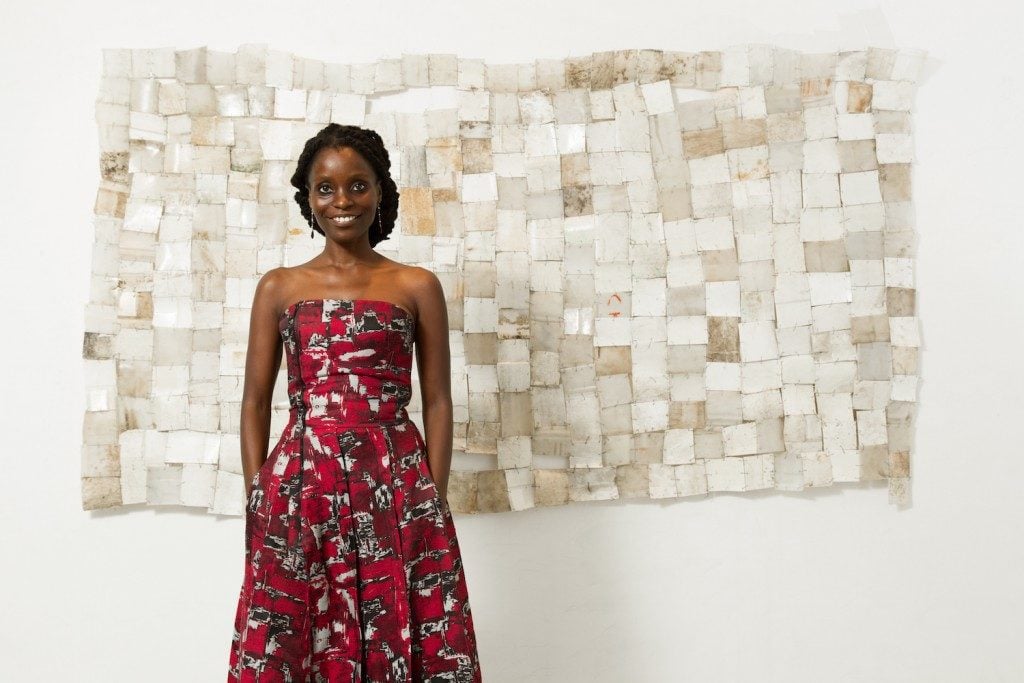
Nana Oforiatta Ayim in front of the work of Ghanaian artist Serge Attukwei Clottey. Photo: Nii Odzenma.
Ghana’s fortunes have been rising since the discovery of offshore oil in 1992. The World Bank projects the country’s economy will grow 7.6 percent in 2019—but experts say that it must diversify for long-term sustainability. That’s part of why the budget for Ghana’s ministry of tourism, culture, and creative arts rose 120 percent between 2014 and 2018 and is expected to triple again by 2022.
The country’s profile has also been boosted by the success of such international art stars as El Anatsui, Ibrahim Mahama, and Lynette Yiadom-Boakye (who, although born in London, is of Ghanaian origin). Mahama recently founded an artist-run project space, the Savannah Center for Contemporary Art, in the city of Tamale, less than an hour’s flight from Accra.
“Ghana’s collector base is on the rise,” says the art consultant Adora Mba. “There needs to be continuous support and cultivation of this growing art market and more platforms—both state and private—to showcase the range and capabilities of Ghanaian artists.”
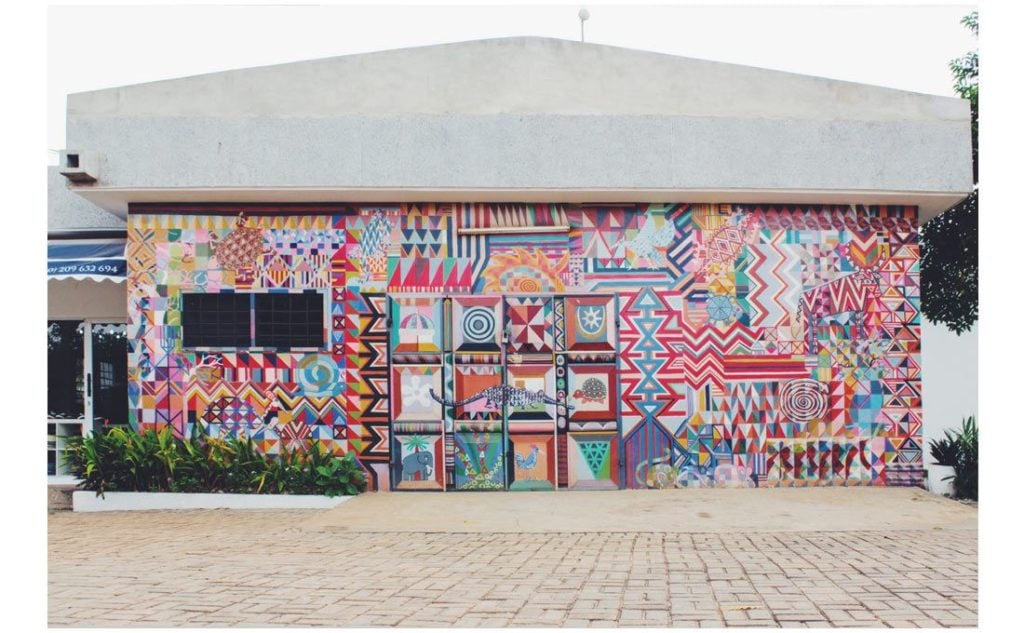
The facade of the Nubuke Foundation, mural by artist Bernard Akoi-Jackson.
Gallery 1957: A contemporary art gallery founded by engineer turned collector turned dealer Marwan Zakhem, it has two spaces in Accra’s Kempinski Hotel.
ANO Ghana: This art space was established by Ghanaian art historian Nana Oforiatta Ayim, who also organized the country’s celebrated pavilion at this year’s Venice Biennale.
Nubuke Foundation: Currently undergoing an expansion, the prominent institution gave early shows to major artists like El Anatsui.
Artists Alliance Gallery: A three-story space on Labadi Beach, it was originally set up to house the works of its owner, Ablade Glover, and now presents a mix of work by Ghanaian artists as well as Kente cloths, African masks, and furniture.
Kwame Nkrumah University of Science and Technology: Look out for artists who attended this institution, the the country’s top school for art, which boasts El Anatsui and Ibrahim Mahama as alumni.
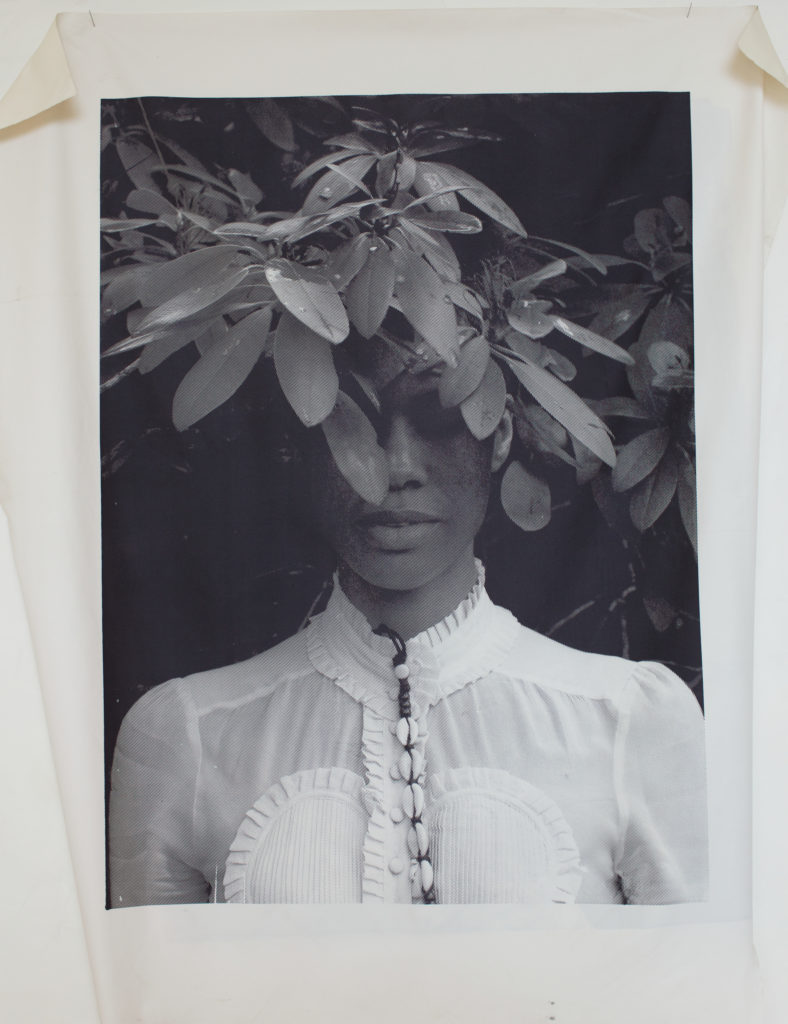
Zohra Opoku, Rhododendron (2016). Courtesy the artist and Gallery 1957, Accra.
What to Know: The German-Ghanaian artist, who won the Armory Show’s inaugural Presents prize for her solo booth in 2017, makes hybrid textiles and photographs that often depict contemporary Ghanaian women in traditional dress, exploring what it means to be a woman in the African Muslim world.
Most Wanted: Screen prints on textiles and fabric
Gallery Affiliation: Gallery 1957 (Accra); Mariane Ibrahim gallery (Chicago)
Price Range: $15,000 to $35,000
Up Next: Opoku will have a solo show at Gallery 1957 in Accra this December, and she was invited to be one of the inaugural artists at Black Rock, Kehinde Wiley’s new residency program in Dakar.
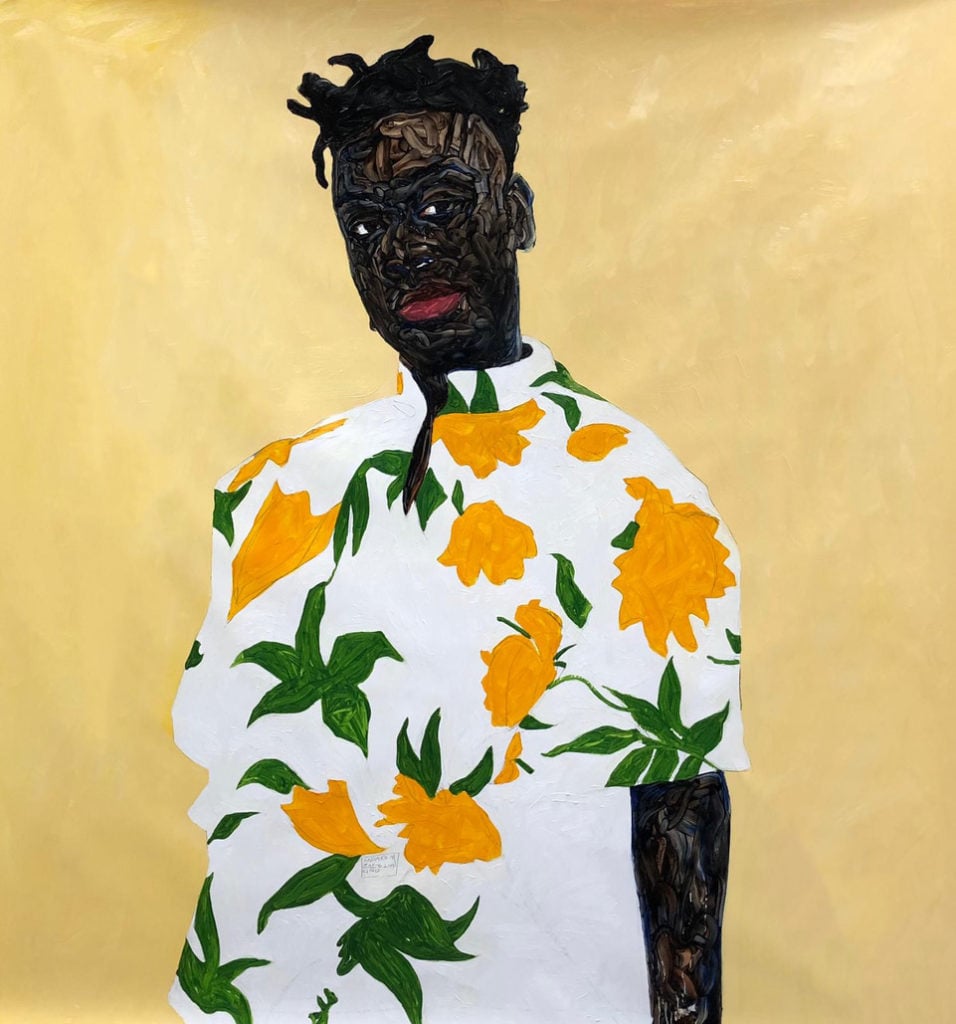
Amoako Boafo, Sunflower Shirt (2019). Courtesy of Marian Ibrahim Gallery.
What to Know: Boafo creates vivid portraits of black people living in his adopted hometown of Vienna. He was brought to the attention of Roberts Projects gallery by his friend Kehinde Wiley.
Most Wanted: Works from his “Black Diaspora” portrait series
Gallery Affiliation: Mariane Ibrahim gallery (Chicago); Roberts Projects (Los Angeles)
Price Range: $10,000 to $25,000
Up Next: He was included in Mariane Ibrahim’s Expo Chicago presentation and will have a solo show at her gallery in spring 2020.
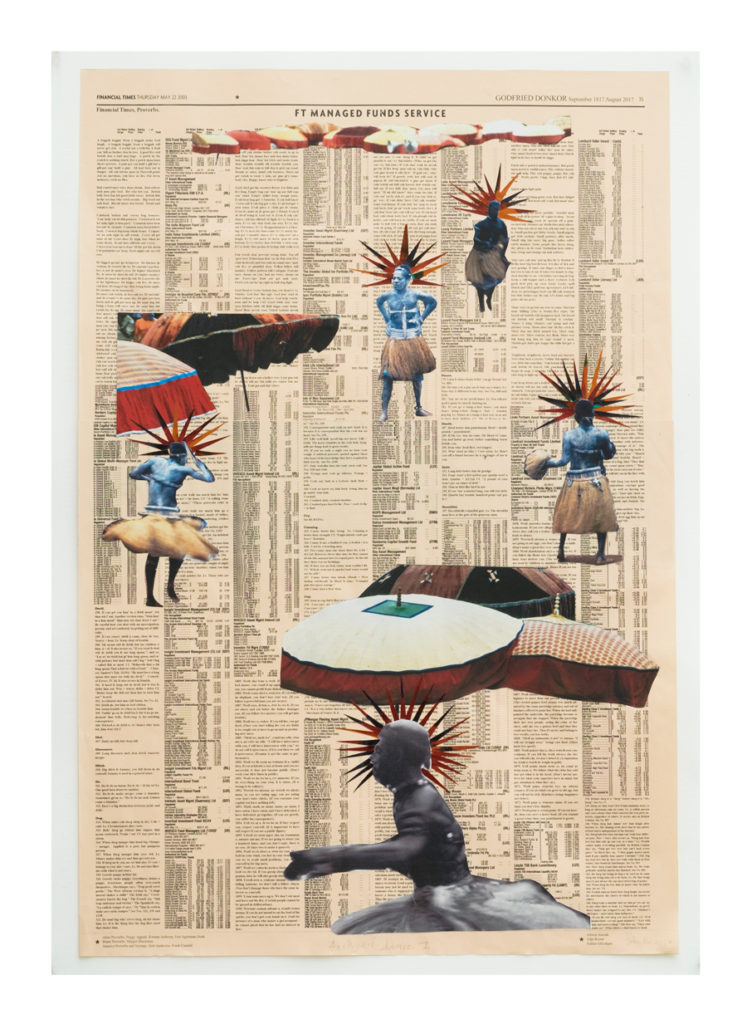
Godfried Donkor, Anokye’s Dance I (2017). Courtesy of the artist and Gallery 1957.
What to Know: Donkor, who splits his time between London and Accra, is best known for his paintings and collages drawn from research into the history of slavery and intercontinental trade.
Most Wanted: Paintings from his “From Slave to Champ” series from the early 1990s and his recent “Battle Royale: Last Man Standing” series, both of which explore the phenomenon of slaves being forced to box
Price Range: $18,700 to $37,000 for paintings; $10,000 to $12,400 for collages
Gallery Affiliation: Gallery 1957 (Accra)
Up Next: He currently has a solo show at Gallery 1957
Coptic art, shaped by the 1,500-year history of the Ethiopian Orthodox Tewahedo Church, is one of the country’s major artistic influences and continues to be practiced by numerous artisans. But the 20th century also witnessed three distinct artistic movements that remained popular until the Ethiopian Revolution of 1974: a realistic, or “naïve,” style used to depict glamorous Ethiopian society; abstraction, which incorporated influences from Western Expressionism and Surrealism; and social realism, which was political in subject matter and focused largely on urban scenes and the struggling masses.
Home to more than 112 million people, Ethiopia is the second-most populous country on the continent. According to the International Monetary Fund, Ethiopia’s economy is expected to grow 8.5 percent this fiscal year, making it the fastest-growing economy in Sub-Saharan Africa.
Despite the difficulty in obtaining art materials, which must be either imported from abroad or made at home, today’s artists work largely in paint, together with photography and sculpture using found objects. “A lot of people use art for commercial or propaganda purposes, and I hope that our government understands the power of supporting our artists and preserving our culture,” says Melaku Belay, founder of the Fendika Cultural Center. “We need to think of the past if we want to go to the future.”
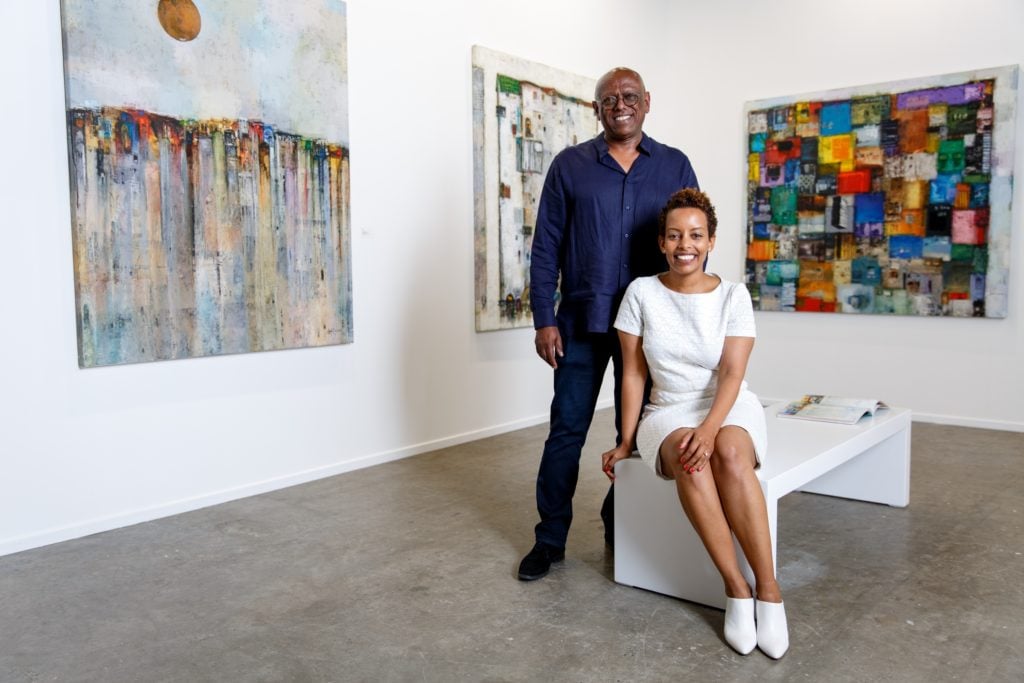
Addis Fine Art founders Mesai Haileleul and Rakeb Sile. Courtesy of Addis Fine Art.
Alle School of Fine Art & Design: Ethiopia’s most important art school, it was founded in 1958, during the reign of Emperor Haile Selassie, and has educated the country’s preeminent painters, sculptors, printmakers, and designers.
Addis Fine Art: The most notable commercial gallery in the capital and its first white-cube art space, Addis regularly showcases graduates from the Alle School. It will open a new location in London’s Cromwell Place gallery hub in 2020.
Guramane Art Center: A gallery dedicated to emerging Ethiopian artists, it represents the vanguard of the country’s art scene.
Zoma: This sprawling museum, founded by artist Elias Sime and curator Meskerem Assegued, opened in April 2019 and shows contemporary art from East Africa and abroad.
![Elias Sime, <i>NOISELESS</i> [detail] (2019). Courtesy James Cohan Gallery.](https://news.artnet.com/app/news-upload/2019/09/detail_EliasSime-1024x683.jpeg)
Elias Sime, NOISELESS [detail] (2019). Courtesy James Cohan Gallery.
What to know: Sime creates monumental works from discarded technological components, including salvaged motherboards and electrical wires. This month, he will receive the African Art Award from the Smithsonian’s National Museum of African Art.
Gallery Affiliation: James Cohan Gallery (New York); Grimm Gallery (Amsterdam, New York)
Most Wanted: Works from his “Tightrope” series, which features electrical waste meticulously woven into abstract compositions reminiscent of aerial landscapes or textiles
Price Range: $65,000 to $300,000
Up Next: Sime’s mid-career retrospective will be traveling through 2021, appearing at the Wellin Museum of Art, the Akron Art Museum, the Kemper Museum, and the Royal Ontario Museum. He will also have a solo exhibition at the Saint Louis Art Museum in 2020. He was recently commissioned to create a large public garden for the Grand National Palace in Addis Ababa, the former home of Emperor Haile Selassie.
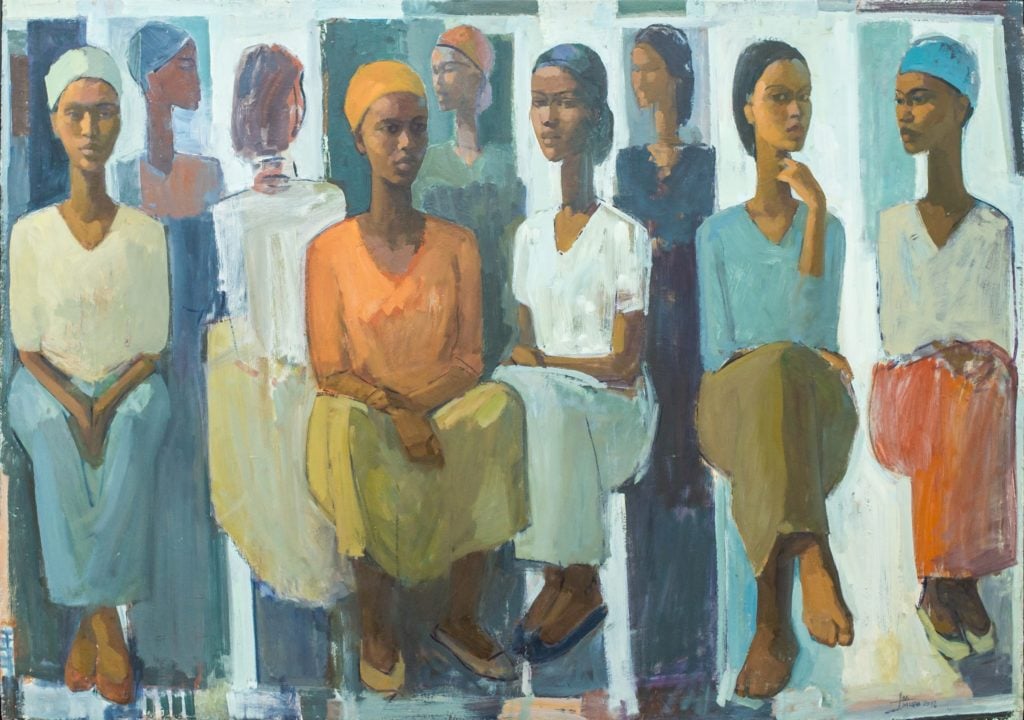
Tadesse Mesfin, Pillars of Life: Market Day (2018). Courtesy Addis Fine Art.
What to Know: Mesfin has spent the past 35 years teaching at the Alle School of Fine Art, where he has influenced a generation of painters.
Gallery Affiliation: Addis Fine Art (Addis Ababa)
Most Wanted: His recent series, “Pillars of Life,” which celebrates the women who work as vendors in Ethiopian markets. It sold out at this year’s Art Dubai
Price Range: $24,000 to $35,000
Up Next: Mesfin will participate in the 1-54 art fair in London and will have a solo exhibition at Addis Fine Art’s new Cromwell Place location in May 2020.
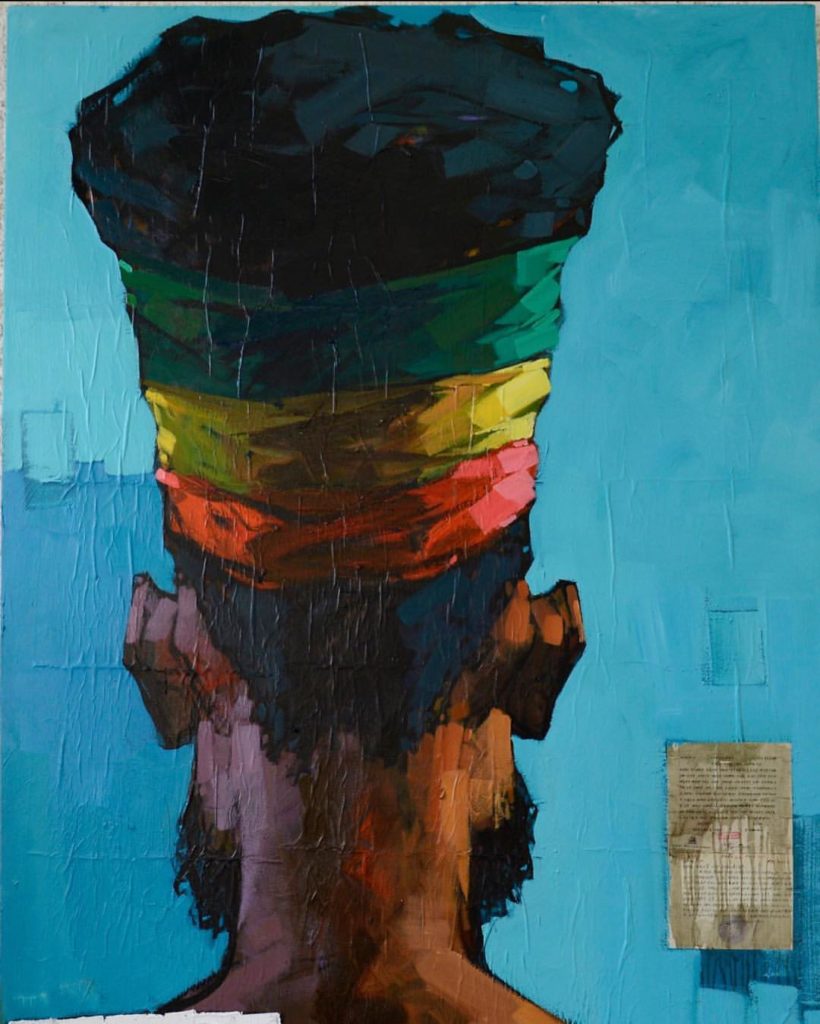
Dawit Abebe, No. 2 Background 35 (2016). Courtesy Kristin Hjellegjerde.
What to Know: Abebe’s large paintings contain figures rendered in thick impasto, typically with their backs turned to the viewer. His work explores such themes as privacy, alienation, and materiality.
Gallery Affiliation: Kristin Hjellegjerde (London, Berlin)
Most Wanted: The “Mutual Identity” drawing series (2018) and his “Background Painting” series (2015), which examines the relationship between history and technology
Price Range: $8,000 to $30,000
Up Next: Abebe will participate in the 1-54 art fair in London and this year’s Karachi Biennale; he will also have a solo show at Kristin Hjellegjerde Gallery in November.
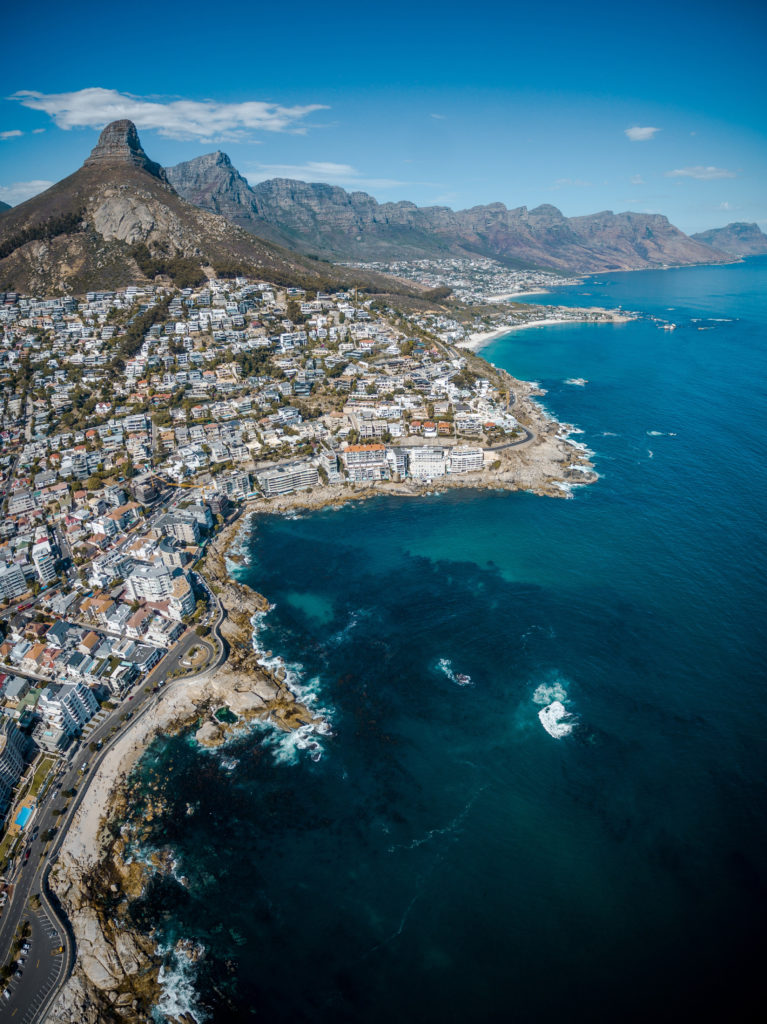
Cape Town’s Atlantic Seaboard, South Africa.
In the early 20th century, much of the art coming out of South Africa was European influenced landscape painting and Impressionism. Interestingly, the country’s art history was also shaped by two female artists who emerged during the 1930s—Maggie Laubser and Irma Stern—who are credited with incorporating Expressionism into South African art.
The apartheid years (1948–94) coincided with a period of experimentation, with artists William Kentridge and Marlene Dumas serving as forerunners of the country’s now-fertile contemporary art scene. But black artists suffered mightily from segregation and political turbulence.
Today, Cape Town is South Africa’s second wealthiest city after Johannesburg, home to 131 ultra-high-net-worth individuals, according to Knight Frank’s 2019 wealth report. But it also has one of the highest rates of inequality in the world.
“What we are witnessing in Cape Town is the birth of a new art capital in Africa,” says Elana Brundyn, CEO of the Norval Foundation. Still, Joost Bosland, a director at Stevenson gallery, sounds a note of caution. “One must not underestimate the persistent provincialism we encounter at institutions in Europe and the United States,” he says.
Goodman Gallery: One of the few art businesses established during the apartheid era, the 53-year-old Johannesburg-based gallery with a commitment to politically engaged art is expanding to London this fall.
Stevenson: A regular at international art fairs, the contemporary art gallery has spaces in Cape Town and Johannesburg as well as an office in Amsterdam.
Zeitz Museum of Contemporary Art: The first major museum in Africa dedicated to contemporary African art displays the collection of German philanthropist and ex-Puma CEO Jochen Zeitz alongside rotating international art exhibitions.
A4 Arts Foundation: Located in a three-story warehouse, this nonprofit center is dedicated to supporting contemporary South African art.
Norval Foundation: Founded by the South African real estate investor Louis Norval in April 2018, South Africa’s second-oldest major private museum boasts a large collection of Modern South African art, a sculpture garden, and nature preserve.
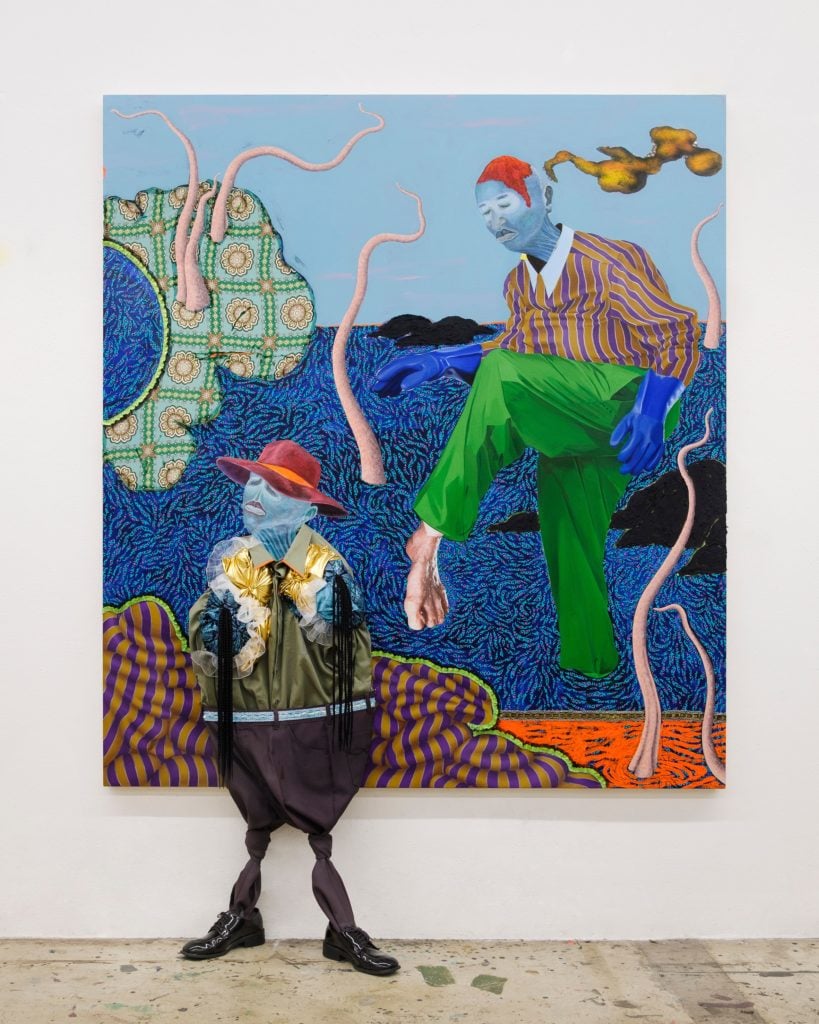
Simphiwe Ndzube, Invitation to my Voyage #2 (2019). Courtesy Nicodim Gallery.
What to Know: The Los Angeles-based, Cape Town-born painter and sculptor creates Surrealist depictions of life in post-apartheid South Africa.
Gallery Affiliation: Stevenson (Cape Town, Johannesburg); Nicodim Gallery (Los Angeles, Bucharest); Ever Gold Projects (San Francisco)
Most Wanted: His otherworldly works on linen, which combine such mediums as acrylic, spray paint, collage, and found objects
Price Range: $6,000 to $35,000
Up Next: His work is included in the Lyon Biennale (on view through January 5).
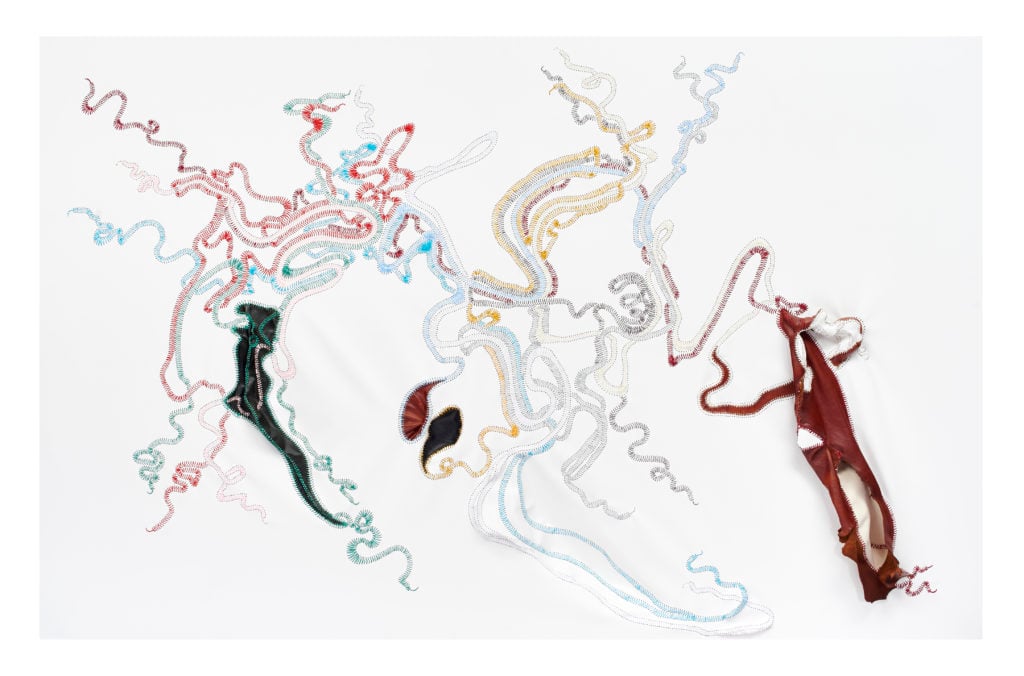
Nicholas Hlobo, Ulwabelwano (2015). Courtesy Lehmann Maupin.
What to Know: The artist makes large-scale installations, primarily out of ribbon, leather, wood, and rubber detritus, that tackle themes of sexuality and gender identity as well as the history of South Africa and his own Xhosa culture.
Gallery Affiliation: Stevenson (Cape Town, Johannesburg); Lehmann Maupin (New York, Hong Kong, Seoul)
Most Wanted: Mixed-media works on linen incorporating ribbon, leather, and domestic objects
Price Range: $20,000 to $120,000
Up Next: He was recently featured in the group show “Material Insanity” at the Museum of African Contemporary Art Al Maaden in Marrakech, and is included in the 10th edition of Lustwarande, an international sculpture exhibition in the Netherlands running through October 20.
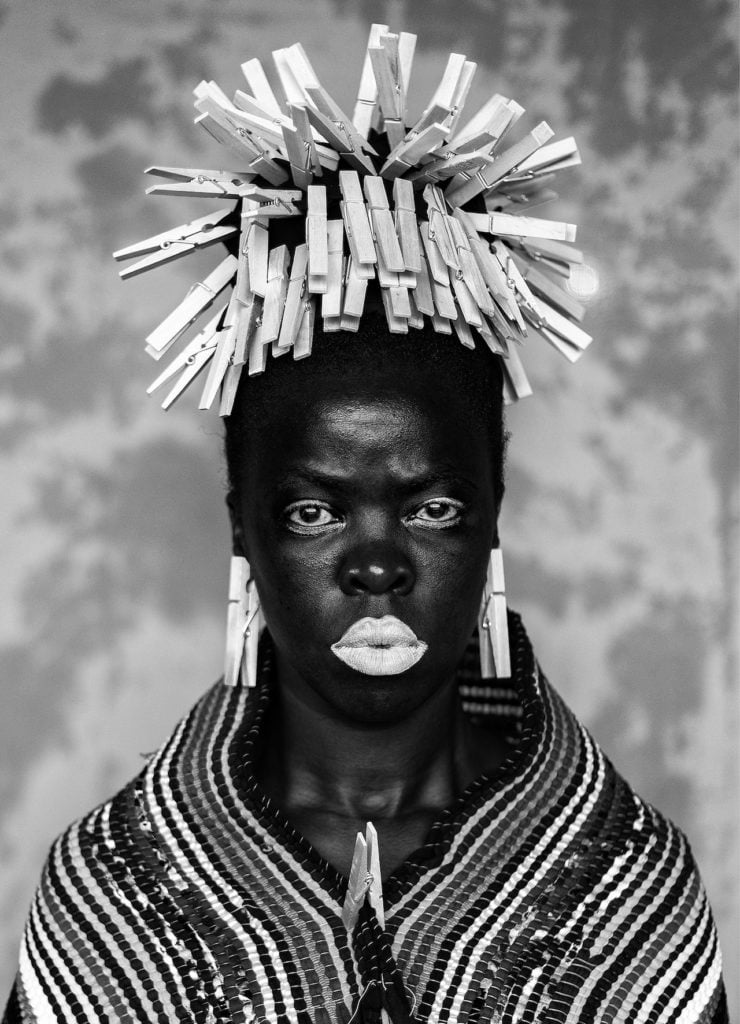
Zanele Muholi, Bester I, Mayotte (2015). Courtesy Yancey Richardson Gallery.
What to Know: A photographer and filmmaker who self-identifies as a “visual activist,” Muholi creates black-and-white images depicting black LGBTQ+ communities. They recently won this year’s Lucie Award for Outstanding Achievement for Humanitarian Photography.
Gallery Affiliation: Stevenson (Cape Town, Johannesburg); Yancey Richardson (New York); Wentrup Gallery (Berlin)
Most Wanted: Black-and-white self-portraits in editions of eight
Price Range: $5,000 to $30,000
Up Next: Muholi’s work prominently marked the doorways in the Arsenale at this year’s Venice Biennale. Their first large-scale retrospective will open at Tate Modern in London on April 29.
Art is in Senegal’s DNA. Léopold Sédar Senghor, the country’s first president after achieving independence in 1960, invested as much as 25 percent of the state’s budget in its culture ministry.
Creativity flourished under his presidency during a period between 1960 and 1980 known as l’École de Dakar, which was characterized by state patronage. Dakar’s art scene is also known for Laboratoire Agit’Art, a satirical and avant-garde art collective founded in Dakar in 1973 by writer and performer Youssouf John.
Today, Senegal is among Africa’s most stable countries, having experienced three peaceful political transitions since 1960. Since 2014, discoveries of large oil and gas deposits in Senegal have opened the country to energetic international speculation. The World Bank predicts Senegal’s economy will grow more than 6 percent annually over the coming years.
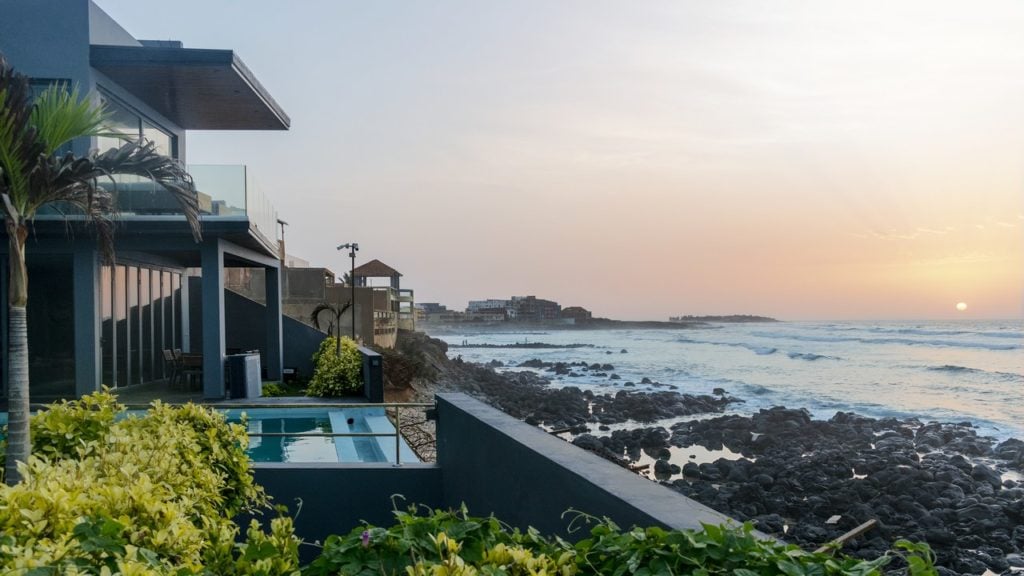
A view of Kehinde Wiley’s Artist Residency, Black Rock. © Kehinde Wiley, photo: Mamadou Gomis.
Galerie Cécile Fakhoury: A sleek space dedicated to contemporary African art, the gallery opened in Côte d’Ivoire in 2012 and expanded to Dakar in 2018.
Galerie Atiss: A six-floor space situated in a villa, the gallery—established in 1996 by Aissa Dione—promotes Modern and contemporary African art as well as traditional textiles.
Black Rock: Kehinde Wiley’s luxurious artist residency in Dakar launched in April.
Raw Material Company: This center for art and education was founded by curator Koyo Kouoh, who was recently named the executive director and chief curator of the Zeitz Museum of Contemporary Art Africa in Cape Town.
The Museum of Black Civilizations: The museum, which opened in December in a 150,000-square-foot structure, celebrates black civilizations from across the globe.
Dak’Art: Also known as the Dakar Biennale, the 30-year-old event is Africa’s most venerable art biennial.
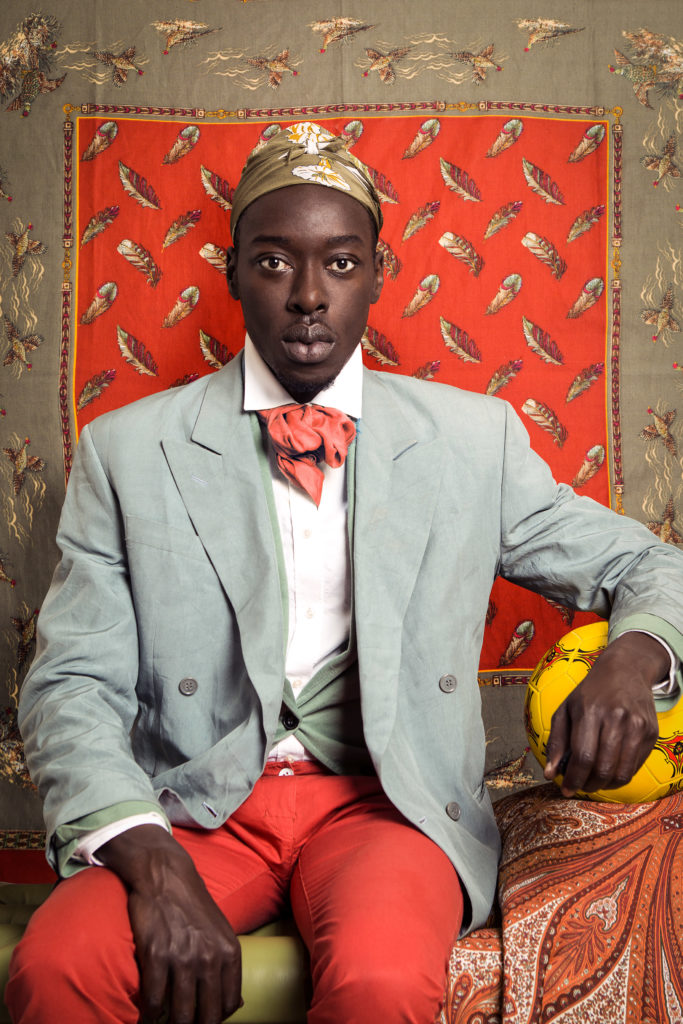
Omar Victor Diop, Omar Ibn Saïd 1770-1864 (2014). Courtesy MAGNIN-A.
What to Know: Diop’s photographs of prominent figures from Senegal’s cultural scene honor the long tradition of African studio photography.
Gallery Affiliation: MAGNIN-A (Paris), Jenkins Johnson Gallery (San Francisco)
Most Wanted: The “Diaspora” series (2014), which pays tribute to significant Africans from the 16th to the 19th centuries, and the “Liberty” series (2016), which reflects the history of Black protest movements.
Price Range: $5,600 to $13,500
Up Next: His work will be included in the Fotofest Biennial in Houston next spring.
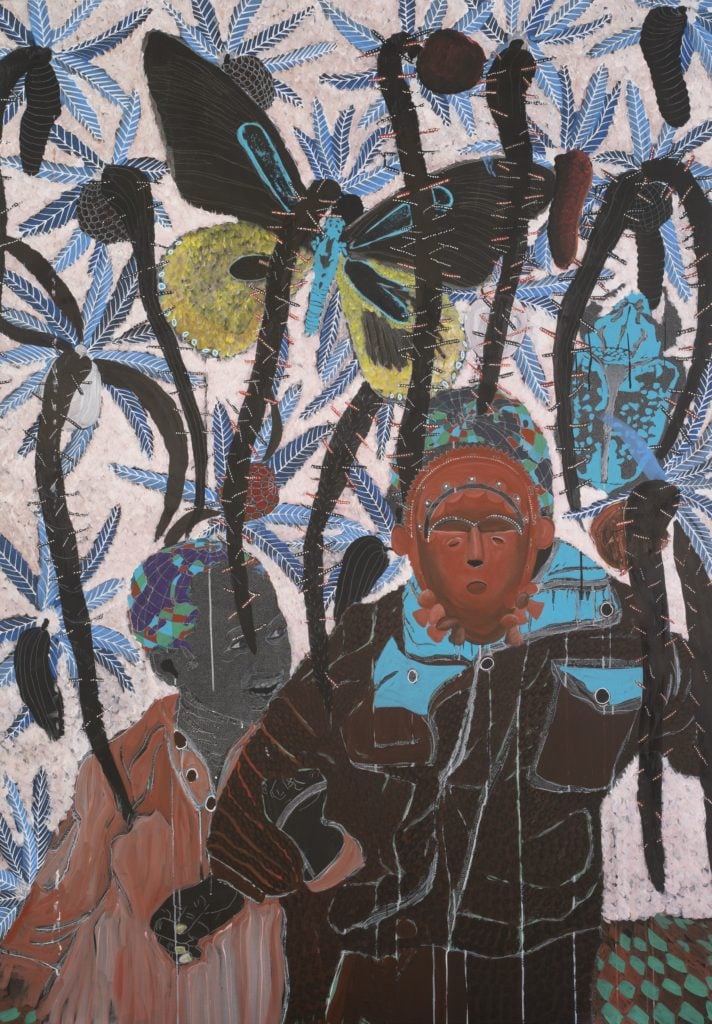
Omar Ba, Fruits, Masques, Insectes (2018). Courtesy Galerie Templon.
What to Know: The artist, who splits his time between Dakar and Geneva, creates intricate mixed-media paintings that blur the line between figuration and abstraction while drawing on the legacy of colonialism. Two of his works have come to auction this year, both of them outperforming their high estimates.
Gallery Affiliation: Galerie Templon (Paris, Brussels); Hales Gallery (London, New York)
Most Wanted: Paintings on cardboard
Price Range: $22,500 to $67,000 for paintings; $4,500 to $11,000 for drawings
Up Next: Ba has a solo show at the Montreal Museum of Fine Arts, running through November 10.
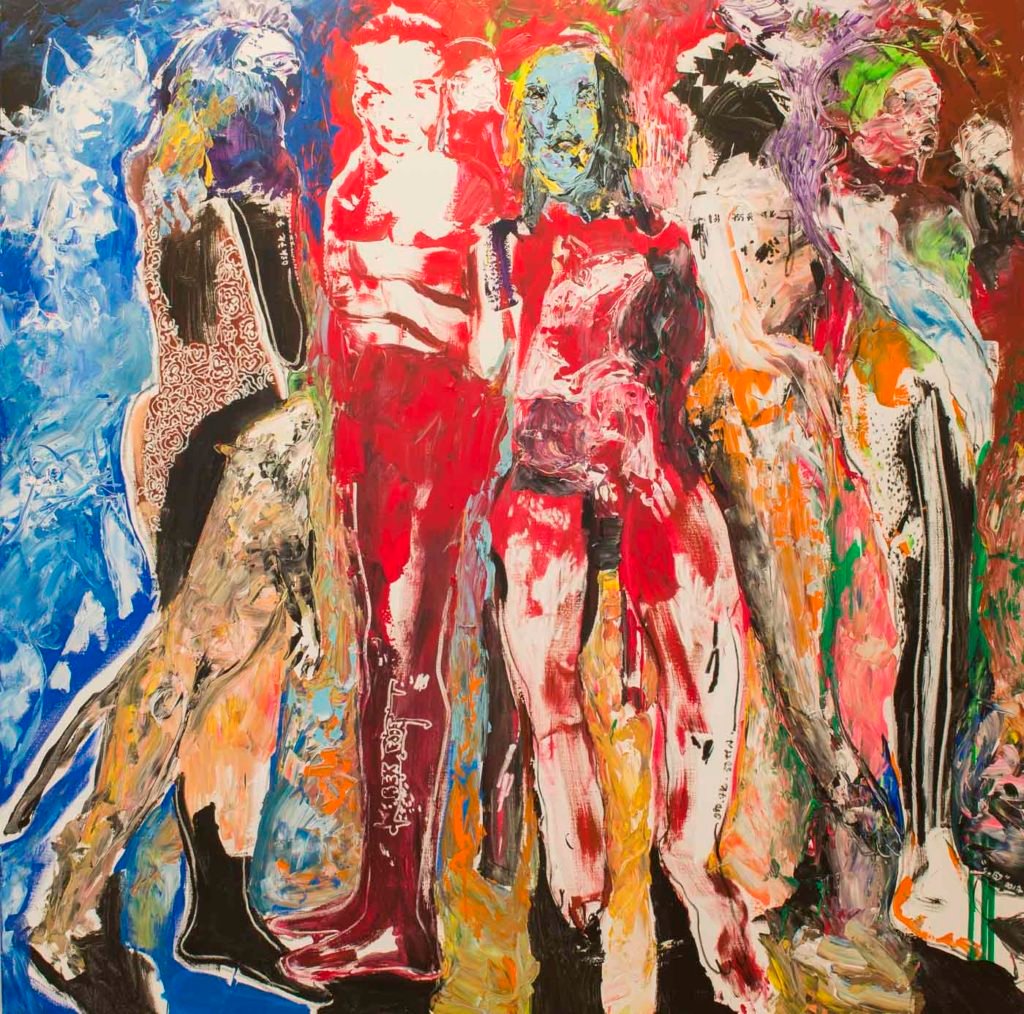
Soly Cissé, Men and Lives V (2018). Courtesy the artist.
What to Know: A painter, sculptor, and draftsman, Cissé is best known for abstract paintings in which heroic figures emerge from scenes of chaos and destruction.
Gallery Affiliation: Sulger-Buel Gallery (London); Ethan Cohen Fine Arts (New York)
Most Wanted: Paintings from the series “Men and Lives” (2018)
Price Range: Approximately $20,000 for paintings
Up Next: The artist’s work will be at Sulger-Buel Gallery’s stand at the 1-54 fair in London.
In the early 20th century, Lagos’s art scene was dominated by Ben Enwonwu, who developed a distinctly African response to European Modernism. During the 1950s, different schools of art sprang up: The Zaria Rebels fused Modernism with Nigerian forms, while the more conventional Osogbo School carried on Yoruba traditions. Two decades later, students at the University of Nigeria, including El Anatsui and Olu Oguibe, founded the Nsukka group, which aimed to reinvent the traditional Igbo style.
Even after Nigeria emerged from military rule in 1999, it suffered from the perception that it was dangerous and inhospitable. The tide began to turn in the mid-2000s, when a new crop of collectors and art spaces emerged. The country’s scene has been further boosted by the success of Nigerian-born Njideka Akunyili Crosby, whose lush paintings are among the most sought-after works of contemporary art today.
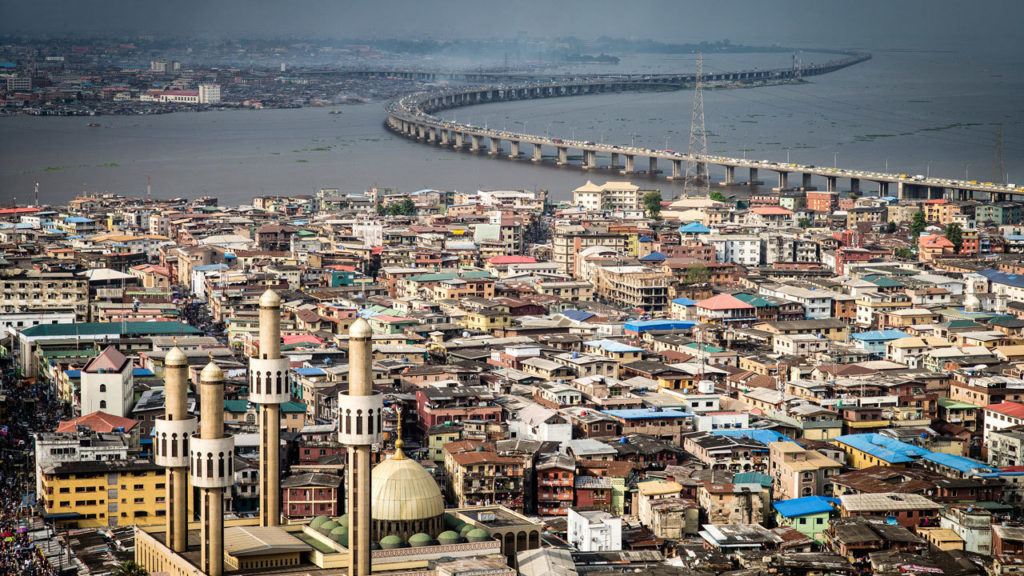
An aerial view of Lagos, Nigeria. Photo: Michael Kraus/Getty Images.
“We have had an art scene for a very long time,” says Tokini Peterside, founder and director of Art X Lagos, West Africa’s first contemporary art fair. “The question is whether the scene was structured in a way that the Western art world could align with.”
Nigeria—which accounts for about 47 percent of West Africa’s population—is home to more black billionaires than any other country, though its economy is expected to grow more slowly than other African nations because its oil industry is likely to stagnate in the face of regulatory uncertainty. It will presumably remain a hub regardless: It has one of the largest populations of young people in the world.
Omenka Gallery: This contemporary art gallery is housed in the former home of Ben Enwonwu, one of Africa’s most influential artists, and run by his son.
Lagos Center for Contemporary Art: This nonprofit hub for experimental art was founded in 2007 by curator Bisi Silva, who died earlier this year. El Anatsui has called the organization and its educational initiatives “the biggest thing to happen to the scene.”
Arthouse Contemporary: An auction house specializing in Modern and contemporary art from West Africa, it was founded by Indian-born Kavita Chellaram.
SMO Contemporary: This contemporary art gallery also offers art advisory services.
African Artists Foundation: A nonprofit dedicated to the promotion of Nigerian art, it organizes the annual National Art Competition.
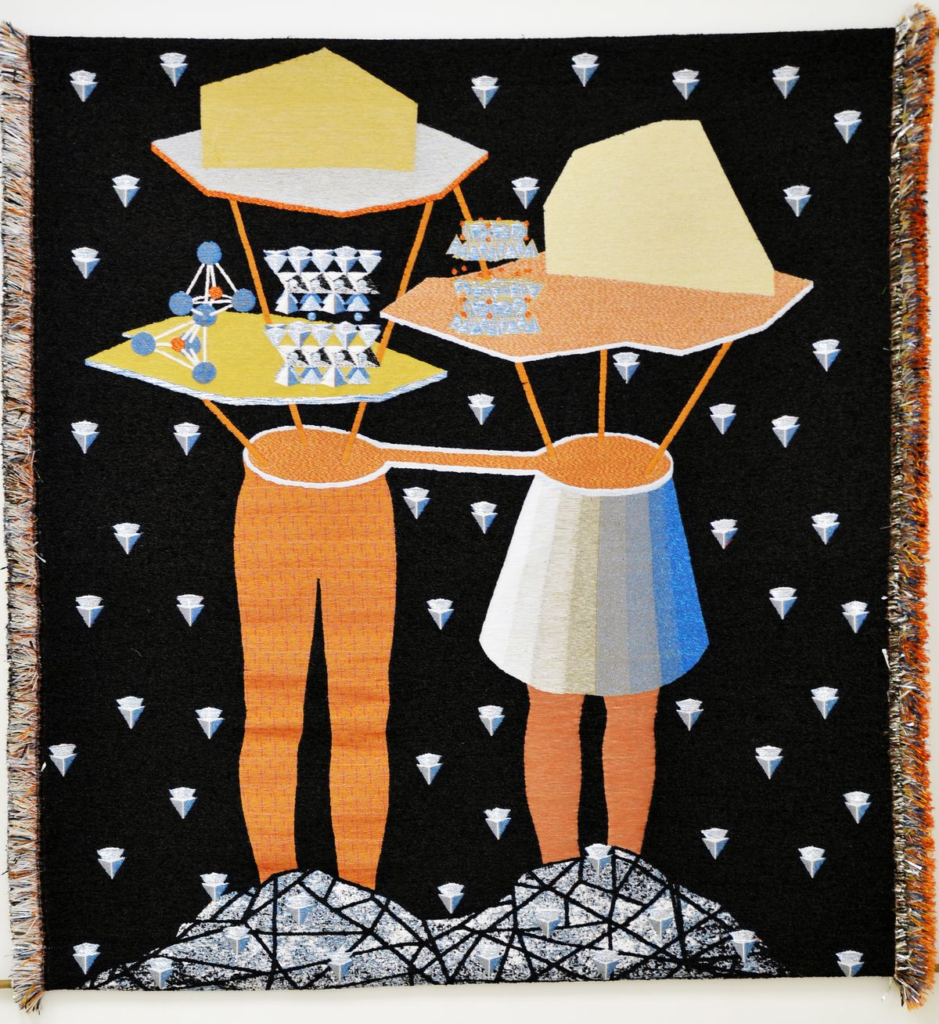
Otobong Kkanga, Transformation (2014). Courtesy Mendes Wood DM.
What to Know: The Kano-born, Antwerp-based artist creates works inspired by Nigeria’s history, land, and politics in a wide variety of forms and materials. She won a special mention at the Venice Biennale for her winding Murano glass sculpture and works on paper in the central exhibition and is also the inaugural recipient of the $100,000 Lise Wilhelmsen Art Award, given to an artist whose work inspires social change.
Most Wanted: Her vivid, almost futuristic tapestries, which come in editions of five
Price Range: $8,000 to $200,000
Gallery Affiliation: Mendes Wood DM (São Paulo, Brussels, New York); In Situ-Fabienne Leclerc (Paris); Lumen Travo (Amsterdam)
Up Next: Nkanga has a solo show at Tate St. Ives through January 2020, a solo exhibition at Zeitz MOCAA in Cape Town opening on November 19, and a residency at the Martin-Gropius-Bau in Berlin.
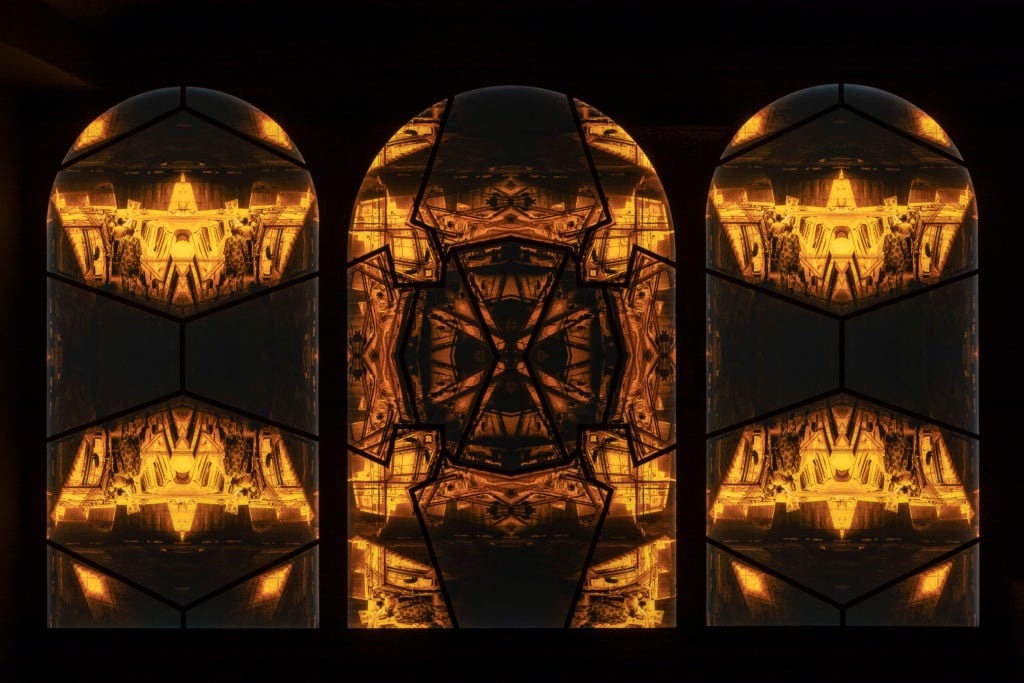
Emeka Ogboh, Spirit and Matter (2018). Courtesy Galerie Imane Farès
What to Know: The Enugu-born, Berlin-based sound artist participated in both documenta 14 and Skulptur Projekte Münster in 2017 without a gallery backing him—the only artist to do so. He was also shortlisted for the 2018 Hugo Boss Prize for his performances, sound installations, and food-based works that explore migration, the diaspora, and post-colonialism.
Gallery Affiliation: Imane Farès (Paris)
Most Wanted: His “Sound Portraits,” which comprise speakers housed in painted, striped boxes that hang on the wall like paintings and emit sonic portraits of Lagos
Price Range: $22,500 to $100,000
Up Next: An installation inspired by an Igbo village square is on view at the Cleveland Museum of Art through December 1. His work is also included in a group show about borders, “Walking Through Walls,” at the Martin-Gropius-Bau in Berlin through January 19.
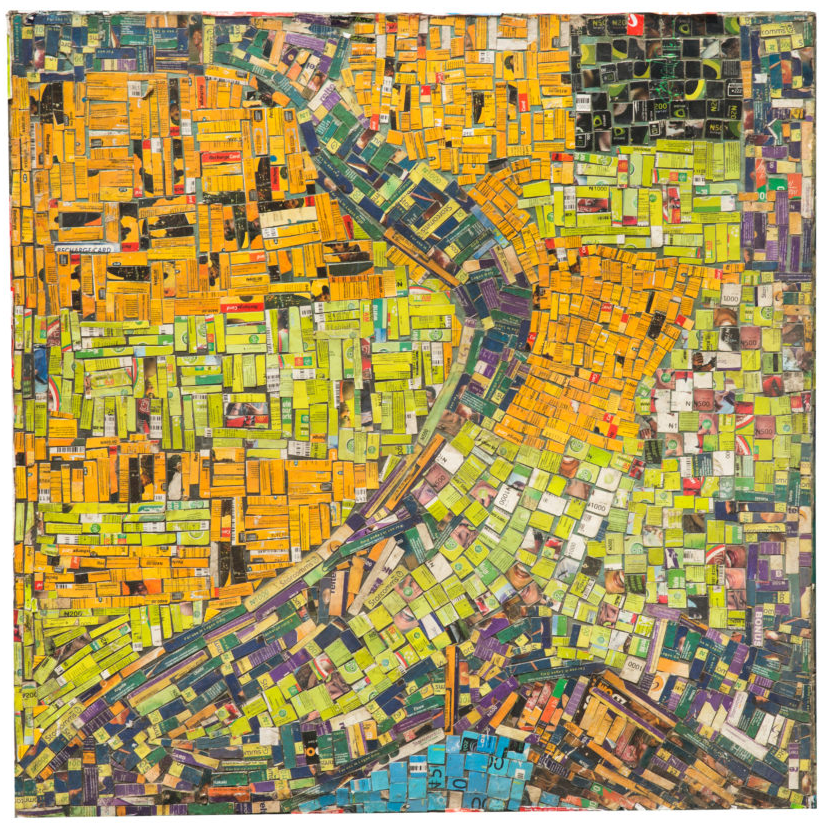
Gerald Chukwuma, Google Map I (2017). Courtesy Gallery 1957.
What to Know: Chukwuma creates intricate sculptures by painting, burning, and chiseling wood and slate. His work examines themes of politics and migration in Africa.
Gallery Affiliation: Gallery 1957 (Accra); Kristin Hjellegjerde Gallery (London, Berlin)
Most Wanted: His “Wrinkles” series (2017–19), which pays tribute to the historic Igbo Landing site on St. Simons Island in Georgia, where one of the largest mass suicides of slaves took place in 1803
Price Range: $9,300 to $25,000 for wood-slate sculptural works
Up Next: The artist will have a solo show at Gallery 1957 in Accra next August and participate in 1-54’s London edition via Kristin Hjellegjerde Gallery.
During the mid-20th century, amid France’s decolonization, two aesthetic trends emerged in Morocco. The first, promoted by the Tetouan School of Fine Arts, was influenced by the aesthetic of southern Spain. The second, represented by the Casablanca School of Fine Arts, revolved around the young painters Farid Belkahia, Mohamed Melehi, and Mohammed Chebaa, who incorporated Moroccan visual culture and architecture into their geometric and abstract works.
Today, the scene is home to a variety of genres, from street art to performance and film, of which photography may be the most prominent. The city also boasts a more developed gallery and museum infrastructure than many other cities on the continent, as well as its own art fair, 1-54, founded by Moroccan entrepreneur Touria El Glaoui.
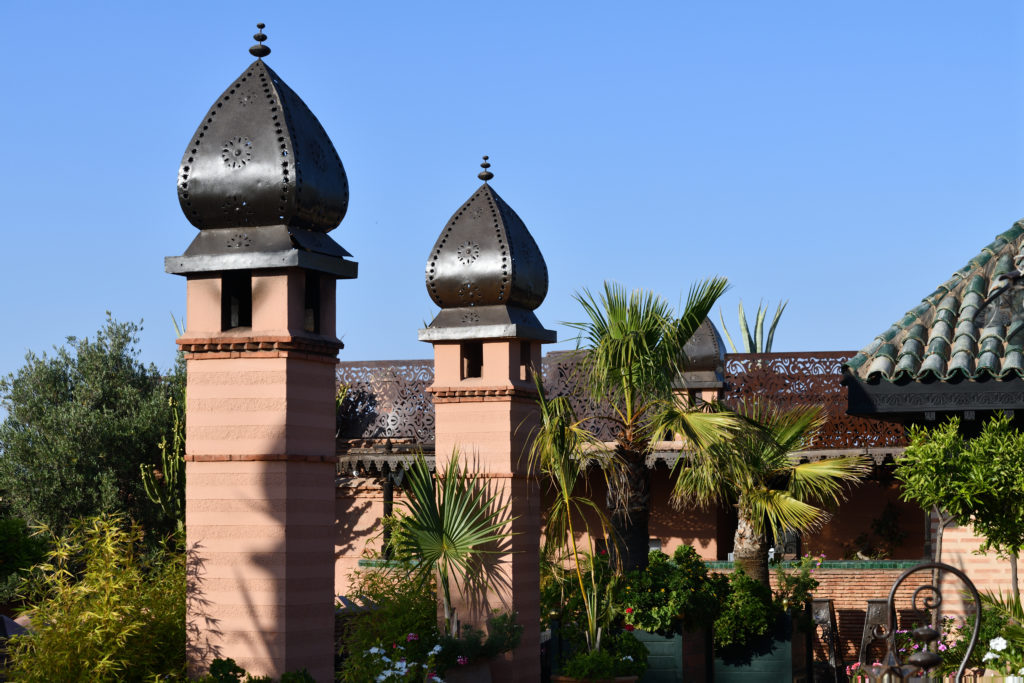
The gardens in Marrakech, Morocco. Photo by Frédéric Soltan/Corbis via Getty Images.
The International Monetary Fund’s latest report projects that Morocco’s economic growth rate will reach 4.5 percent by 2024, up from 3.1 percent in 2018. “Marrakech firmly represents the gateway of Morocco to Africa and to Europe,” says curator Meriem Berrada.

Islamic Art Museum of Marrakech at Majorelle Garden. Photo: Education/Universal Images Group/Getty.
Museum of African Contemporary Art Al Maaden: Marrakech’s first museum of African art, it was established in 2016.
Yves Saint Laurent Museum: This museum dedicated to the late fashion designer Yves Saint Laurent and his love of Morocco opened in 2017.
David Bloch Gallery: A gallery of international art, it is designed to resemble a minimalist New York loft.
Galerie 127: This gallery specializes in work by Moroccan and international photographers.
Riad Yima: The gallery, shop, and tearoom was established by the photographer Hassan Hajjaj, whose hip-hop-inspired, color-saturated portraits have earned him the moniker “the Andy Warhol of Marrakech.”
Montresso Art Foundation: Since its inception in 2009, this foundation has been best known for its prestigious and competitive Jardin Rouge residency program. Keep an eye out for artists who have gone through it.
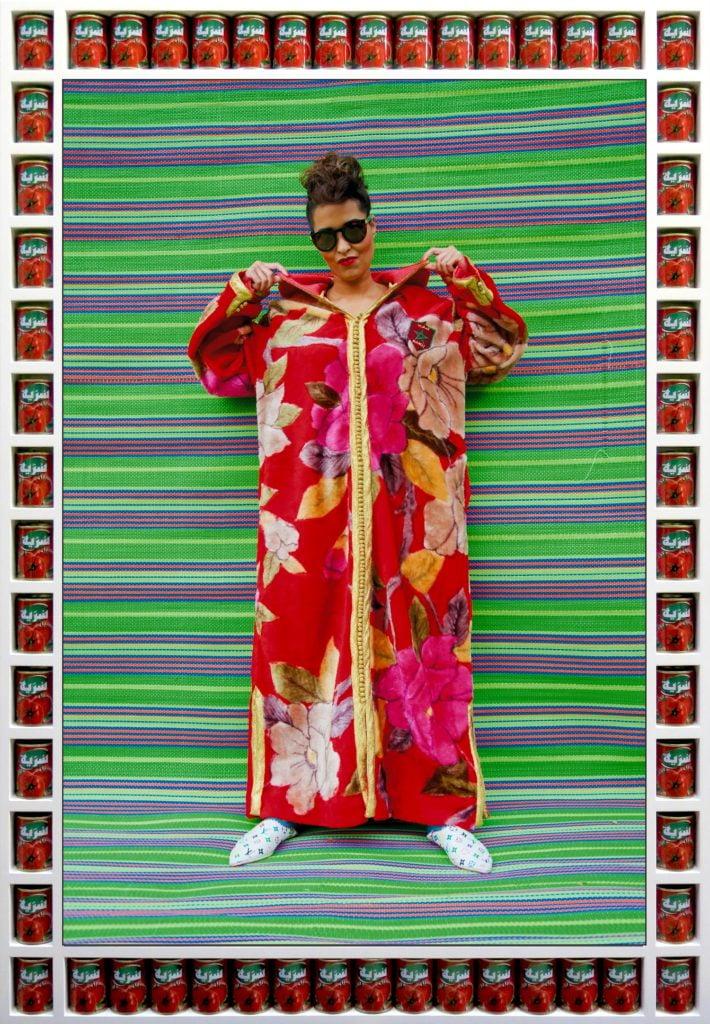
Hassan Hajjaj, Mimz from “My Rockstars” (2013). Courtesy of the artist and The Third Line.
What to Know: Hajjaj is perhaps the city’s best-known artist, famous for his vivid photographs of impossibly hip subjects ranging from stylish locals to stars like Madonna and Cardi B.
Gallery Affiliation: The Third Line (Dubai)
Most Wanted: “Kesh Angels” (2010–ongoing), a series dedicated to the city’s young veiled women bikers, and the “My Rockstars” series (1999–ongoing)
Price Range: $7,000 to $40,000
Up Next: A large-scale retrospective is on view at the Maison Européenne de la Photographie in Paris through November 17.
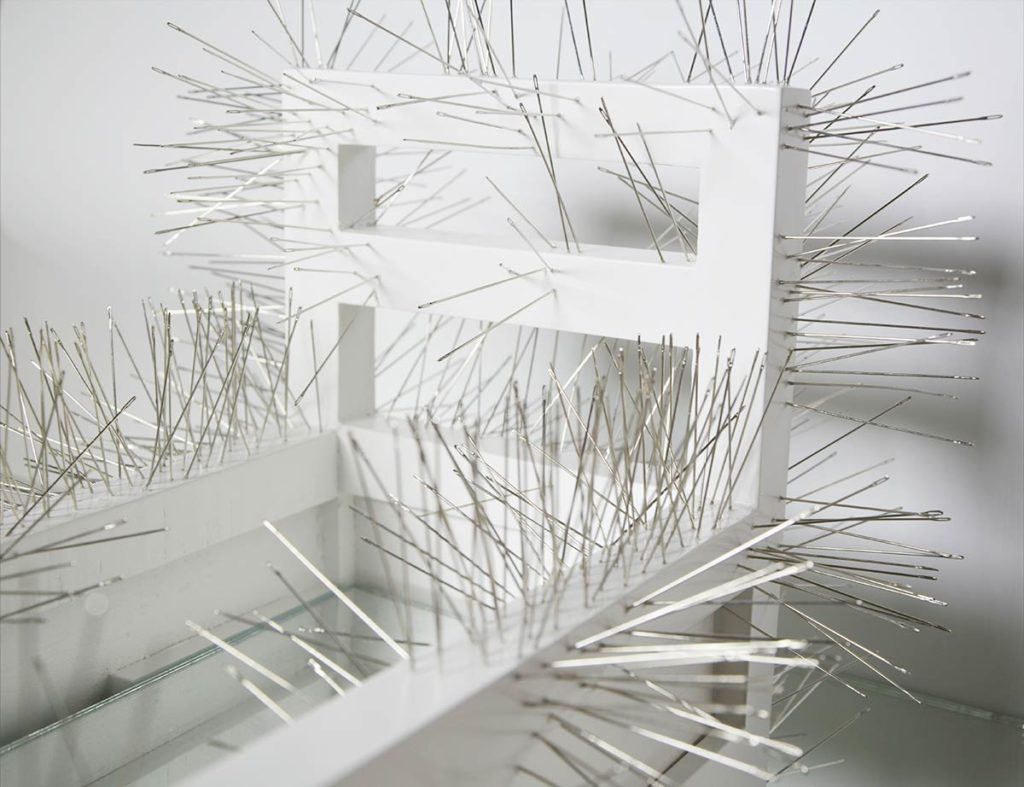
Safaa Erruas, Inaccessible (2014). Courtesy L’Atelier 21.
What to Know: The Tetouan-based artist creates intricate sculptures based on domestic furniture and almost exclusively uses the color white.
Most Wanted: Her delicate mixed-media installations incorporating domestic materials, such as Double Voie (2019), a work made in metal wire and paper to present a snapshot of life under the 20-year reign of King Mohammed VI
Price Range: $800 to $18,000
Gallery Affiliation: L’Atelier 21 (Casablanca, Morocco); Officine dell’Immagine (Milan); 50 Golborne (London)
Up Next: She is participating in the Biennale Rabat, through December 18, and will be represented at 1-54 in London through 50 Golborne.
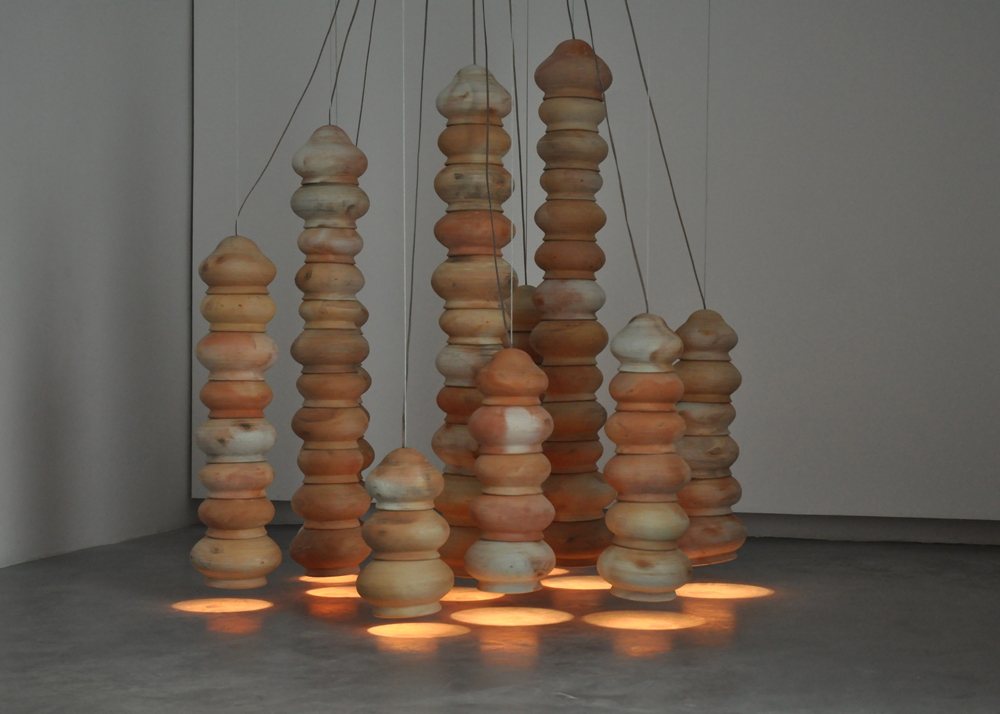
Younès Rahmoun, Jamor (2015). Courtesy Galerie Imane Farès.
What to Know: Based in Tetouan, Rahmoun creates meditative, ethereal videos, drawings, sculptures, and photographs that draw on his Islamic faith.
Most Wanted: Meditative multimedia installations like Markib-Manzil-Mawja (2015)
Gallery Affiliation: Galerie Imane Farès (Paris)
Price Range: $6,000 to $100,000
Up Next: The artist presented a performance at the Smith College Museum of Art on September 19 ahead of a larger solo show there in 2022. This month, he debuts a new installation in the Tuileries Gardens in Paris as part of FIAC’s public art program.
A version of this story originally appeared in the fall 2019 artnet Intelligence Report. To download the full report, which has juicy details on the most bankable artists, a look at how the art market has changed over the past 30 years, and a deep dive into the shrinking business of auction guarantees, click here.